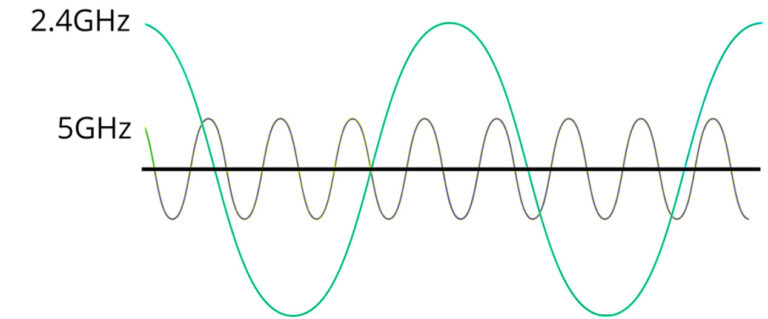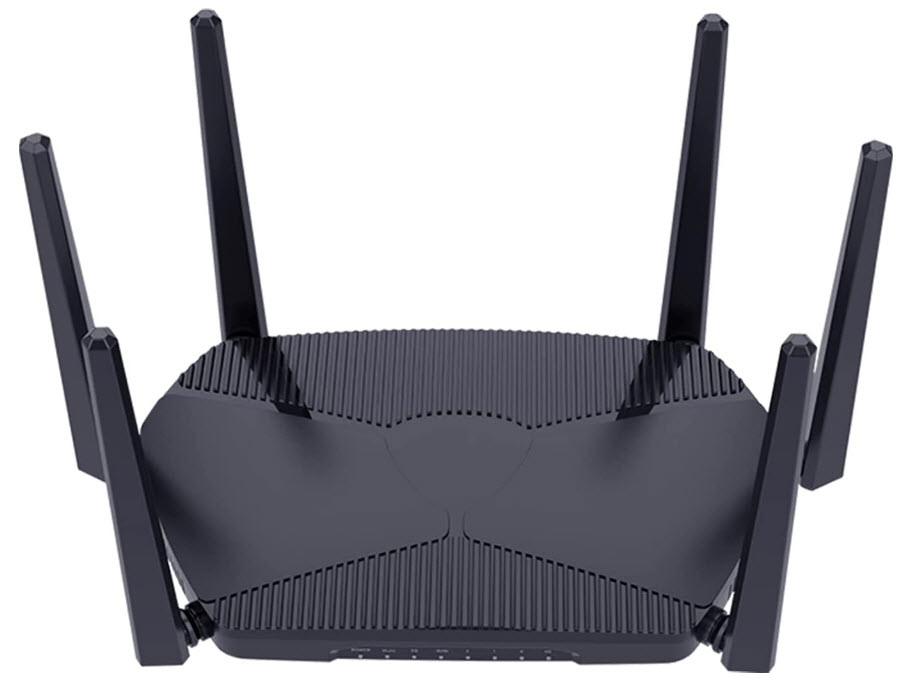Table of Contents
ToggleIntroduction
In today’s connected world, Wi-Fi has become an essential part of our daily lives. From streaming movies to video chatting with friends and family, Wi-Fi enables us to access the internet and connect to a wide range of devices from almost anywhere. But have you ever stopped to consider the frequency band that your Wi-Fi is using?


There are two main frequency bands used for Wi-Fi: 2.4 GHz and 5 GHz. Both of these frequency bands have their own unique characteristics, and understanding the differences between them can be helpful when it comes to choosing the right Wi-Fi setup for your home or business. In this blog post, we’ll delve into the specifics of 2.4 GHz and 5 GHz Wi-Fi, comparing and contrasting their range, speed, and interference levels. By the end, you’ll have a better understanding of which frequency band is right for you.
Overview of 2.4 GHz Wi-Fi
- 2.4 GHz is one of the original frequency bands used for Wi-Fi, and it has become the most widely used frequency band for a variety of devices such as smartphones, laptops, and smart home devices.
- One of the main advantages of 2.4 GHz is its long range. This makes it a good choice for situations where the device needs to be connected to the router from a distance, such as in a large house or office building.
- 2.4 GHz is also known for its good penetration through walls and other solid objects. This makes it a good choice for devices that need to be used in multiple rooms or on different floors of a building.
- However, the popularity of 2.4 GHz has also led to increased interference from other devices using the same frequency band. This can lead to slower speeds and a less stable connection.
Overview of 5 GHz Wi-Fi
- 5 GHz is a more recent frequency band that is becoming increasingly popular for Wi-Fi. It is used by devices such as smartphones, laptops, and gaming consoles.
- One of the main advantages of 5 GHz is its faster speeds. This makes it a good choice for activities that require a lot of bandwidth, such as streaming high-definition video or online gaming.
- Another advantage of 5 GHz is that it is less crowded than 2.4 GHz, which means that there is less interference from other devices. This can lead to a more stable connection and higher speeds.
- However, the shorter wavelength of 5 GHz means that it has a shorter range and is not as good at penetrating through walls. This can make it less reliable for devices that are far away from the router or need to be used in multiple rooms.
Differences between 2.4 GHz and 5 GHz
- Range: 2.4 GHz has a longer range and is better at penetrating through walls and other solid objects, while 5 GHz has a shorter range and is not as good at penetrating through walls.
- Speed: 5 GHz is generally faster than 2.4 GHz, but this can depend on a variety of factors such as the distance between the device and the router, the number of devices connected to the network, and the type of activities being performed.
- Interference: 2.4 GHz is more crowded than 5 GHz, which means that there is more potential for interference from other devices. This can lead to slower speeds and a less stable connection. However, 5 GHz is less crowded and can offer a more stable connection with higher speeds.
When it comes to choosing between 2.4 GHz and 5 GHz, there are a few factors to consider:
- Distance: If the device will be used far away from the router or in multiple rooms, 2.4 GHz may be a better choice due to its longer range and better penetration through walls.
- Number of devices: If there are a lot of devices connected to the network, 5 GHz may be a better choice due to its faster speeds and reduced interference.
- Type of activity: If you will be using the device for activities that require a lot of bandwidth, such as streaming video or online gaming, 5 GHz may be a better choice due to its faster speeds.
Ultimately, the best frequency band for you will depend on your specific needs and the characteristics of your environment. Experimenting with both frequency bands can help you determine which one works best for you.
Conclusion
In conclusion, 2.4 GHz and 5 GHz are the two main frequency bands used for Wi-Fi. Each has its own unique characteristics, and understanding the differences between them can be helpful when it comes to choosing the right Wi-Fi setup for your home or business.
2.4 GHz is a well-established frequency band with a long range and good penetration through walls. It is used by a wide range of devices and is generally a good choice for situations where the device needs to be connected to the router from a distance or in multiple rooms. However, the popularity of 2.4 GHz has also led to increased interference from other devices, which can lead to slower speeds and a less stable connection.
On the other hand, 5 GHz is a more recent frequency band that is becoming increasingly popular for Wi-Fi. It offers faster speeds and is less crowded than 2.4 GHz, which means that there is less interference from other devices. However, 5 GHz has a shorter range and is not as good at penetrating through walls, which can make it less reliable for devices that are far away from the router or need to be used in multiple rooms.
When choosing between 2.4 GHz and 5 GHz, consider factors such as the distance between the device and the router, the number of devices connected to the network, and the type of activities being performed. Experimenting with both frequency bands can help you determine which one works best for your specific needs.

